Hermit
A hermit, or eremite (adjectival form: eremitic or hermitic), is a person who lives in seclusion from society, usually for religious reasons.[1][2][3] Hermits are a part of several sections of Christianity, and the concept is found in other religions as well.
Description
In Christianity, the term was originally applied to a Christian who lives the eremitic life out of a religious conviction, namely the Desert Theology of the Old Testament (i.e., the 40 years wandering in the desert that was meant to bring about a change of heart).
In the Christian tradition the eremitic life[4] is an early form of monastic living that preceded the monastic life in the cenobium. In chapter 1, the Rule of St Benedict lists hermits among four kinds of monks. In the Roman Catholic Church, in addition to hermits who are members of religious institutes, the Canon law (canon 603) recognizes also diocesan hermits under the direction of their bishop as members of the consecrated life. The same is true in many parts of the Anglican Communion, including the Episcopal Church in the United States, although in the canon law of the Episcopal Church they are referred to as "solitaries" rather than "hermits".
Often, both in religious and secular literature, the term "hermit" is used loosely for any Christian living a secluded prayer-focused life, and sometimes interchangeably with anchorite/anchoress, recluse and "solitary". Other religions, for example, Buddhism, Hinduism, Islam (Sufism), and Taoism, also have hermits in the sense of individuals living an ascetic form of life.
In modern colloquial usage, "hermit" denotes anyone living apart from the rest of society, or simply participating in fewer social events, for any reason.
Etymology
The word hermit comes from the Latin ĕrēmīta,[5] the latinisation of the Greek ἐρημίτης (erēmitēs), "of the desert",[6] which in turn comes from ἔρημος (erēmos),[7] signifying "desert", "uninhabited", hence "desert-dweller"; adjective: "eremitic".
History
Tradition
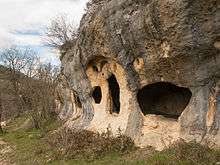
In the common Christian tradition the first known Christian hermit in Egypt was Paul of Thebes (fl. 3rd century), hence also called "St. Paul the first hermit". Antony of Egypt (fl. 4th century), often referred to as "Antony the Great", is perhaps the most renowned of all the very early Christian hermits owing to the biography by Athanasius of Alexandria. An antecedent for Egyptian eremiticism may have been the Syrian solitary or "son of the covenant" (Aramaic bar qəyāmā) who undertook special disciplines as a Christian.[8]
Christian hermits in the past have often lived in isolated cells or hermitages, whether a natural cave or a constructed dwelling, situated in the desert or the forest. People sometimes sought them out for spiritual advice and counsel. Some eventually acquired so many disciples that they no longer had physical solitude. Some early Christian Desert Fathers wove baskets to exchange for bread.
In medieval times hermits were also found within or near cities where they might earn a living as a gate keeper or ferryman. In the 10th century, a rule for hermits living in a monastic community was written by Grimlaicus. In the 11th century, the life of the hermit gained recognition as a legitimate independent pathway to salvation. Many hermits in that century and the next came to be regarded as saints.[9] From the Middle Ages and down to modern times, eremitical monasticism has also been practiced within the context of religious institutes in the Christian West.
In the Catholic Church the Carthusians and Camaldolese arrange their monasteries as clusters of hermitages where the monks live most of their day and most of their lives in solitary prayer and work, gathering only briefly for communal prayer and only occasionally for community meals and recreation. The Cistercian, Trappist and Carmelite orders, which are essentially communal in nature, allow members who feel a calling to the eremitic life, after years living in the cenobium or community of the monastery, to move to a cell suitable as a hermitage on monastery grounds. There have also been many hermits who chose that vocation as an alternative to other forms of monastic life.
Anchorites
The term "anchorite" (from the Greek ἀναχωρέω anachōreō, signifying "to withdraw", "to depart into the country outside the circumvallate city") is often used as a synonym for hermit, not only in the earliest written sources but throughout the centuries.[10] Yet the anchoritic life, while similar to the eremitic life, can also be distinct from it. Anchorites lived the religious life in the solitude of an "anchorhold" (or "anchorage"), usually a small hut or "cell", typically built against a church.[11] The door of an anchorage tended to be bricked up in a special ceremony conducted by the local bishop after the anchorite had moved in. Medieval churches survive that have a tiny window ("squint") built into the shared wall near the sanctuary to allow the anchorite to participate in the liturgy by listening to the service and to receive Holy Communion. Another window looked out into the street or cemetery, enabling charitable neighbors to deliver food and other necessities. Clients seeking the anchorite's advice might also use this window to consult them.[12]
Contemporary Christian life
Catholicism
Catholics who wish to live in eremitic monasticism may live that vocation as a hermit:
- in an eremitical order (for example Carthusian, Camaldolese), but in both cases under obedience to their religious superior (see below), or as an Oblate affiliated with the Camaldolese or
- as a diocesan hermit under the canonical direction of their bishop (canon 603, see below).
There are also lay people who informally follow an eremitic lifestyle and live mostly as solitaries.[13] Not all the Catholic lay members that feel that it is their vocation to dedicate themselves to God in a prayerful solitary life perceive it as a vocation to some form of consecrated life. An example of this is life as a Poustinik, an Eastern Catholic expression of eremitic living that is finding adherents also in the West.
Eremitic members of religious institutes

In the Catholic Church, the institutes of consecrated life have their own regulations concerning those of their members who feel called by God to move from the life in community to the eremitic life, and have the permission of their religious superior to do so. The Code of Canon Law (1983) contains no special provisions for them. They technically remain a member of their institute of consecrated life and thus under obedience to their religious superior.
The Carthusian and Camaldolese orders of monks and nuns preserve their original way of life as essentially eremitical within a cenobitical context, that is, the monasteries of these orders are in fact clusters of individual hermitages where monks and nuns spend their days alone with relatively short periods of prayer in common.
Other orders that are essentially cenobitical, notably the Trappists, maintain a tradition under which individual monks or nuns who have reached a certain level of maturity within the community may pursue a hermit lifestyle on monastery grounds under the supervision of the abbot or abbess. Thomas Merton was among the Trappists who undertook this way of life.
Diocesan hermits
The earliest form of Christian eremitic or anchoritic living preceded that as a member of a religious institute, since monastic communities and religious institutes are later developments of the monastic life. Bearing in mind that the meaning of the eremitic vocation is the Desert Theology of the Old Testament, it may be said that the desert of the urban hermit is that of their heart, purged through kenosis to be the dwelling place of God alone.
So as to provide for men and women who feel a calling to the eremitic or anchoritic life without being or becoming a member of an institute of consecrated life, but desire its recognition by the Roman Catholic Church as a form of consecrated life nonetheless, the Code of Canon Law 1983 legislates in the Section on Consecrated Life (canon 603) as follows:
§1 Besides institutes of consecrated life the church recognizes the eremitic or anchoritic life by which the Christian faithful devote their life to the praise of God and salvation of the world through a stricter separation from the world, the silence of solitude and assiduous prayer and penance. §2 A hermit is recognized by law as one dedicated to God in consecrated life if he or she publicly professes in the hands of the diocesan bishop the three evangelical counsels, confirmed by vow or other sacred bond, and observes a proper program of living under his direction.
Canon 603 §2 therefore lays down certain requirements for those who feel a vocation to the kind of eremitic life that is recognized by the Roman Catholic Church as one of the "other forms of consecrated life". They usually are referred to as "diocesan hermits". The norms of canon 603 do not apply to the many other Catholic faithful who live alone and devote themselves to fervent prayer for the love of God without however feeling called by God to seek recognition of their prayerful solitary life from the Roman Catholic Church by entering the consecrated life.
The Catechism of the Catholic Church of 11 October 1992 (§§918–921) comments on the eremitic life as follows:
From the very beginning of the Church there were men and women who set out to follow Christ with greater liberty, and to imitate him more closely, by practicing the evangelical counsels. They led lives dedicated to God, each in his own way. Many of them, under the inspiration of the Holy Spirit, became hermits or founded religious families. These the Church, by virtue of her authority, gladly accepted and approved.
Bishops will always strive to discern new gifts of consecrated life granted to the Church by the Holy Spirit; the approval of new forms of consecrated life is reserved to the Apostolic See. (Footnote: Cf. CIC, can. 605). ... Without always professing the three evangelical counsels publicly, hermits "devote their life to the praise of God and salvation of the world through a stricter separation from the world, the silence of solitude and assiduous prayer and penance". (Footnote: CIC, can. 603 §1)
They manifest to everyone the interior aspect of the mystery of the Church, that is, personal intimacy with Christ. Hidden from the eyes of men, the life of the hermit is a silent preaching of the Lord, to whom he has surrendered his life simply because he is everything to him. Here is a particular call to find in the desert, in the thick of spiritual battle, the glory of the Crucified One.
Catholic Church norms for the consecrated eremitic and anchoritic life do not include corporal works of mercy. Nevertheless, every hermit, like every Christian, is bound by the law of charity and therefore ought to respond generously, as his or her own circumstances permit, when faced with a specific need for corporal works of mercy. Hermits, like every Christian, are also bound by the law of work. If they are not financially independent, they may engage in cottage industries or be employed part-time in jobs that respect the call for them to live in solitude and silence with extremely limited or no contact with other persons. Such outside jobs may not keep them from observing their obligations of the eremitic vocation of stricter separation from the world and the silence of solitude in accordance with canon 603, under which they have made their vow. Although canon 603 makes no provision for associations of hermits, these do exist (for example the "Hermits of Bethlehem" in Chester NJ and the "Hermits of Saint Bruno" in the United States; see also lavra, skete).[14]
Anglicanism
Many of the recognised religious communities and orders in the Anglican Communion make provision for certain members to live as hermits, more commonly referred to as solitaries. One Church of England community, the Society of St. John the Evangelist, now has only solitaries in its British congregation.[15] Anglicanism also makes provision for men and women who seek to live a single consecrated life, after taking vows before their local bishop; many who do so live as solitaries.[16] The Handbook of Religious Life, published by the Advisory Council of Relations between Bishops and Religious Communities, contains an appendix governing the selection, consecration, and management of solitaries living outside recognised religious communities.[17]
In the Canon Law of the Episcopal Church (United States), those who make application to their diocesan bishop and who persevere in whatever preparatory program the bishop requires, take vows that include lifelong celibacy. They are referred to as solitaries rather than hermits. Each selects a bishop other than their diocesan as an additional spiritual resource and, if necessary, an intermediary. At the start of the twenty-first century the Church of England reported a notable increase in the number of applications from people seeking to live the single consecrated life as Anglican hermits or solitaries.[18]
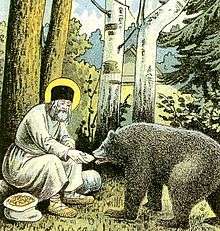
Eastern Orthodoxy
In the Orthodox Church and Eastern Rite Catholic Churches, hermits live a life of prayer as well as service to their community in the traditional Eastern Christian manner of the poustinik. The poustinik is a hermit available to all in need and at all times. In the Eastern Christian churches one traditional variation of the Christian eremitic life is the semi-eremitic life in a lavra or skete, exemplified historically in Scetes, a place in the Egyptian desert, and continued in various sketes today including several regions on Mount Athos.
Notable Christian hermits
Early and Medieval Church
- Paul of Thebes, 4th century, Egypt, regarded by St. Jerome as the first hermit[19]
- Anthony of Egypt, 4th century, Egypt, a Desert Father, regarded as the founder of Christian Monasticism
- Macarius of Egypt, 4th century, founder of the Monastery of Saint Macarius the Great, presumed author of "Spiritual Homilies"
- St. Jerome, 4th century, Mediterranean region, Doctor of the Church, considered the spiritual father of the Hieronymite eremitic order
- Syncletica of Alexandria, 4th century, Egypt, one of the early Desert Mothers, her maxims are included in the sayings of the Desert Fathers
- Gregory the Illuminator, 4th century, brought the Christian faith to Armenia
- Mary of Egypt, 4th/5th century, Egypt and Transjordan, penitent
- Simeon Stylites, 4th/5th century, Syria, "pillar hermit"/"pillar saint"
- Sarah of the Desert, 5th century, Egypt, one of the Desert Mothers, her maxims are recorded in the sayings of the Desert Fathers
- St Benedict of Nursia, 6th century, Italy, author of the so-called Rule of St Benedict, regarded as the founder of western monasticism
- Kevin of Glendalough, 6th Century, Ireland
- St. Gall, 7th century, Switzerland, namesake of the city and canton of St. Gallen.
- Herbert of Derwentwater, 7th century, England.
- St. Romuald, 10th/11th century, Italy, founder of the Camaldolese order
- Guðríðr Þorbjarnardóttir, 10th/11th century, Iceland.
- St. Bruno of Cologne, 11th century, France, the founder of the Carthusian order
- Peter the Hermit, 11th century, France, leader of the People's Crusade
- Blessed Eusebius of Esztergom, 13th century, Hungary, the founder of the Order of Saint Paul the First Hermit
- Bl. Gonçalo de Amarante, 13th century, Portugal, Dominican friar
- Richard Rolle de Hampole, 13th century, England, religious writer
- Sergius of Radonezh, 14th century
- Nicholas of Flüe, 15th century, patron saint of Switzerland
- Julian of Norwich, 15th century, England, anchoress
- St. Juan Diego, 1474–1548, Mexico, visionary of the apparition of Our Lady of Guadalupe
Modern times
Members of religious orders:
- Thomas Merton, 20th-century Trappist monk, spiritual writer
- Herman of Alaska, 18th century
- Seraphim of Sarov, 18th/19th century
Diocesan hermits according to canon 603:
- Sr Scholastica Egan, writer on the eremitic vocation
- Sr Laurel M O'Neal, Er Dio, spiritual director, writer on eremitical life
- Fr Vincenzo Ginex (Dom. Ugo-Maria), Er Dio, founder of the Hermits of Saint Bruno
- Hermits of Bethlehem, Chester, NJ (modern lavra)
Others:
- Jeanne Le Ber, 17th/18th-century Canadian Catholic recluse, inspired the founding of the Order of female religious the Recluse Sisters / Les Recluses Missionaires.
- Sister Wendy Beckett, formerly of the Sisters of Notre Dame de Namur, since 1970 also a consecrated virgin, lives in "monastic solitude"; art historian
- Catherine de Hueck Doherty, poustinik, foundress of the Madonna House Apostolate
- Charles de Foucauld, 19th/20th century, formerly Trappist monk, inspired the founding of the Little Brothers of Jesus
- Jan Tyranowski, spiritual mentor to the young Karol Wojtyla, who would eventually become Pope John Paul II
- Order of Watchers, a contemporary French Protestant eremitic fraternity.
Other religions
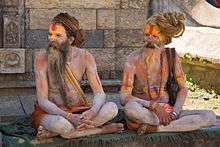
From a religious point of view, the solitary life is a form of asceticism, wherein the hermit renounces worldly concerns and pleasures. This can be done for many reasons, including: to come closer to the deity or deities they worship or revere, to devote one's energies to self-liberation from saṃsāra, etc. This practice appears also in Hinduism, Buddhism, and Sufism. Taoism also has a long history of ascetic and eremitical figures. In the ascetic eremitic life, the hermit seeks solitude for meditation, contemplation, prayer, self-awareness and personal development on physical and mental levels; without the distractions of contact with human society, sex, or the need to maintain socially acceptable standards of cleanliness, dress or communication. The ascetic discipline can also include a simplified diet and/or manual labor as a means of support.
Notable hermits in other religions
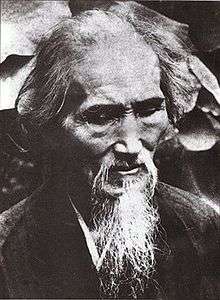
- Ramana Maharshi, the renowned Hindu philosopher and saint who meditated for several years at and around the hillside temple of Thiruvannamalai in Southern India .
- Laozi, who in some traditions spent his final days as a hermit.
- U Khandi, religious figure in Burma
- Yoshida Kenkō, Japanese author
- Zhang Daoling, founder of Tianshi Dao
- Hsu Yun, Ch'an Buddhist monk in China.
- Hanshan, Buddhist/Taoist hermit and poet.
- Lin Bu (林逋), a Song Dynasty poet who spent much of his later life in solitude, while admiring plum blossoms, on a cottage by West Lake in Hangzhou.[20]
- The Baal Shem Tov, founder of Hasidism, lived for many years as a hermit in the Carpathian Mountains.
- Rabbi Nachman of Bratzlav, the Baal Shem Tov's great-grandson, also spent much time in seclusion and instructed his disciples to set aside at least one hour a day for secluded contemplation and prayer. Some followers of Rabbi Nachman devoted themselves to seclusion, such as Rabbi Shmuel of Dashev and two generations later, Rabbi Abraham Chazan.
- Rabbi Yosef Yozel Horowitz, known as the "Alter (Elder) of Novardok", succeeded his master Rabbi Yisrael Salanter in disseminating the pietistic teachings of the Lithuanian Mussar Movement. He too spent much time in seclusion, included one year during which he confined himself to a sealed room, attended by a few devoted followers.
In literature
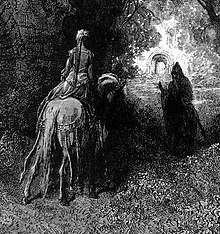
- In medieval romances, the knight-errant frequently encounters hermits on his quest. Such a figure, generally a wise old man, would advise him. Knights searching for the Holy Grail, in particular, learn from a hermit the errors they must repent for, and the significance of their encounters, dreams, and visions.[21] Evil wizards would sometimes pose as hermits, to explain their presence in the wilds, and to lure heroes into a false sense of security. In Edmund Spenser's The Faerie Queene, both occurred: the knight on a quest met a good hermit, and the sorcerer Archimago took on such a pose.[22] These hermits are sometimes also vegetarians for ascetic reasons, as suggested in a passage from Sir Thomas Malory's Le Morte d'Arthur: "Then departed Gawain and Ector as heavy (sad) as they might for their misadventure (mishap), and so rode till that they came to the rough mountain, and there they tied their horses and went on foot to the hermitage. And when they were (had) come up, they saw a poor house, and beside the chapel a little courtelage (courtyard), where Nacien the hermit gathered worts (vegetables), as he had tasted none other meat (food) of a great while."[23] The practice of vegetarianism may have also existed amongst actual medieval hermits outside of literature.
- Hermits appear in a few of the stories of Giovanni Boccaccio's The Decameron. One of the most famous stories, the tenth story of the third day, involves the seduction of a young girl by a hermit in the desert near Gafsa; it was judged to be so obscene that it was not translated into English until the 20th century.
- The Three Hermits is a famous short story by Russian author Leo Tolstoy written in 1885 and first published in 1886, with its shock ending, featured the 3 hermits as the titular characters. The main character of Tolstoy's short story "Father Sergius" is a Russian nobleman who turns to a solitary religious life and becomes a hermit after he learns that his fiancée was a discarded mistress of the czar.
- Friedrich Nietzsche, in his influential work Thus Spoke Zarathustra, created the character of the hermit Zarathustra (named after the Zoroastrian prophet Zarathushtra), who emerges from seclusion to extol his philosophy to the rest of humanity.
References
Notes
- "hermit definition - Oxford Advanced Learner's Dictionary". www.oxfordlearnersdictionaries.com. Retrieved 21 July 2018.
- "hermit Meaning in the Cambridge English Dictionary". dictionary.cambridge.org. Retrieved 21 July 2018.
- "hermit - meaning of hermit in Longman Dictionary of Contemporary English - LDOCE". www.ldoceonline.com. Retrieved 21 July 2018.
- Marina Miladinov, Margins of Solitude: Eremitism in Central Europe between East and West (Zaghreb: Leykam International, 2008)
- eremita, Charlton T. Lewis, Charles Short, A Latin Dictionary, on Perseus project
- ἐρημίτης, Henry George Liddell, Robert Scott, A Greek-English Lexicon, on Perseus project
- ἔρημος, Henry George Liddell, Robert Scott, A Greek-English Lexicon, on Perseus project
- "The Origins and Motivations of Monasticism". 3 October 2002. Retrieved 21 July 2018.
- Tom Licence, Hermits and Recluses in English Society 950–1200, (Oxford, 2011),p.36.
- Oxford English Dictionary. "A person who has withdrawn or secluded themself from the world; usually one who has done so for religious reasons, a recluse, a hermit."
- McAvoy, LA., Anchoritic Traditions of Medieval Europe, Boydell & Brewer Ltd, 2010, p. 2.
- Dyas, E., Edden, V. and Ellis, R., Approaching Medieval English Anchoritic and Mystical Texts, DS Brewer, 2005, pp. 10-12.
- Dubay, T., And You Are Christ's: The Charism of Virginity and the Celibate Life, Ignatius Press, 1987, Ch. 9.
- See for instance Bamberg Anne, Ermite reconnu par l’Église. Le c. 603 du code de droit canonique et la haute responsabilité de l’évêque diocésain, in Vie consacrée, 74, 2002, p. 104–118 and Entre théologie et droit canonique : l’ermite catholique face à l’obéissance, in Nouvelle revue théologique, 125, 2003, p. 429–439 or Eremiten und geweihtes Leben. Zur kanonischen Typologie, in Geist und Leben, 78, 2005, p. 313–318.
- "Society of St John the Evangelist". Fellowship of St John Trust Association. Retrieved 1 August 2018.
- "Solitaries who are not members of a Religious community". Single Consecrated Life. Retrieved 1 August 2018.
- Advisory Council of Relations between Bishops and Religious Communities (2012). Handbook of Religious Life (Fifth (revised) ed.). London: Canterbury Press. p. 194. ISBN 9781853116186.
- "Britain's growing band of religious hermits". The Guardian. Retrieved 1 August 2018.
- "Saint Paul of Thebes - Christian hermit". Retrieved 21 July 2018.
- Fong, Grace S. (2008). Herself an author: gender, agency, and writing in late Imperial China. University of Hawaii Press. p. 58. ISBN 978-0-8248-3186-8.
- Penelope Reed Doob, The Idea of the Labyrinth: from Classical Antiquity through the Middle Ages, pp. 179–81, ISBN 0-8014-8000-0
- Lewis, C. S., Spenser's Images of Life, p. 87, Cambridge University Press, Cambridge, 1967
- Sir Thomas Malory, Le Morte d'Arthur 16.3
Sources

- Herbermann, Charles, ed. (1913). . Catholic Encyclopedia. New York: Robert Appleton Company.
External links
| Wikimedia Commons has media related to Hermits. |
- Rotha Mary Clay, Full Text + Illustrations, The Hermits and Anchorites of England.
- The tradition of the Lersi Hermits
- British hermits: the growing lure of the solitary life
- A forum for hermits & solitaries

